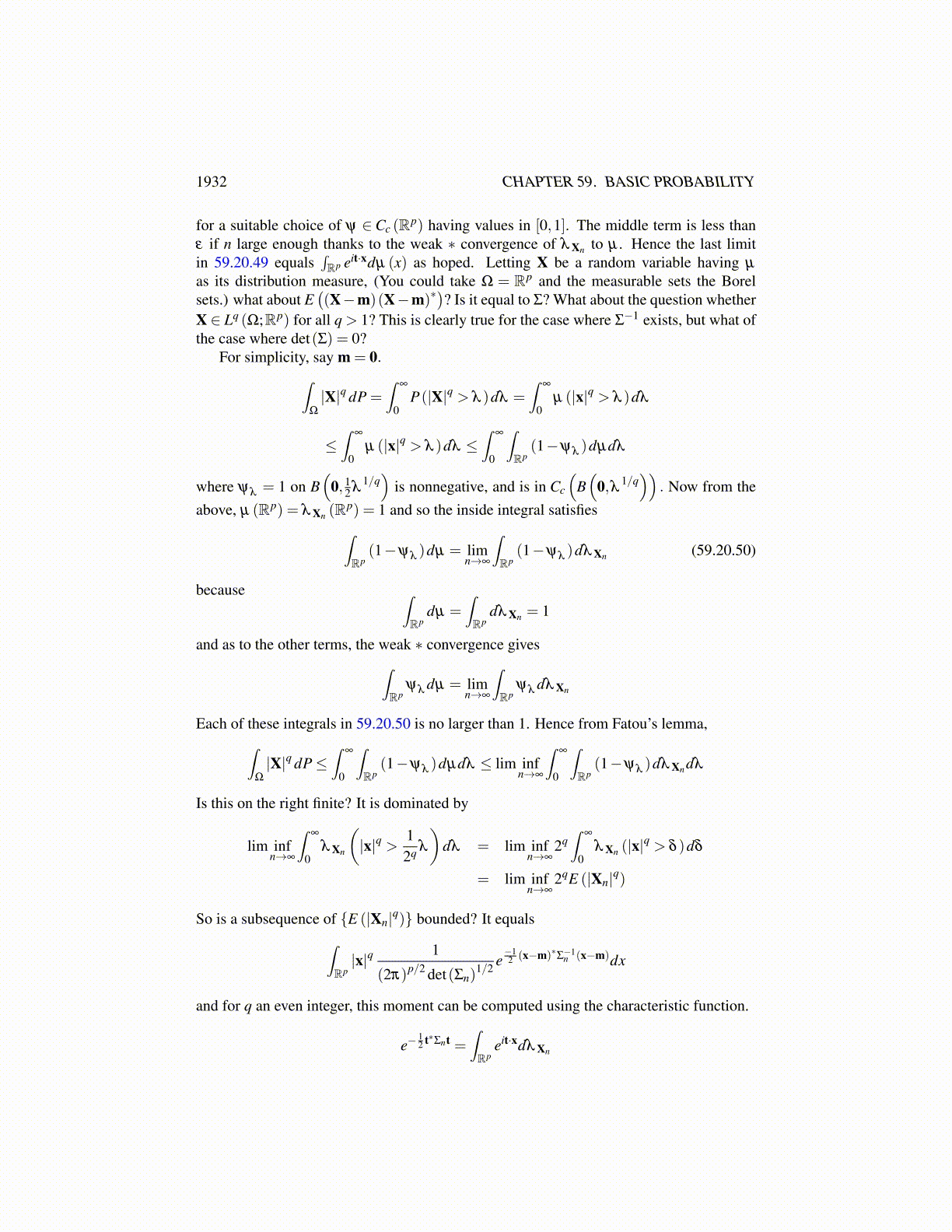
1932 CHAPTER 59. BASIC PROBABILITY
Theorem 59.19.7 Suppose {µn} is a sequence of probability measures defined on the
Borel sets of Rp and let{
φ µn
}denote the corresponding sequence of characteristic func-
tions. If there exists ψ which is continuous at 0, ψ (0) = 1, and for all t,
φ µn(t)→ ψ (t) ,
then there exists a probability measure, λ defined on the Borel sets of Rp and
φ λ (t) = ψ (t) .
That is, ψ is a characteristic function of a probability measure. Also, {µn} convergesweakly to λ .
Proof: By Lemma 59.19.2 {µn} is tight. Therefore, there exists a subsequence{
µnk
}converging weakly to a probability measure, λ . In particular,
φ λ (t) =∫
eit·xdλ (x) = limn→∞
∫eit·xdµnk
(x)
= limn→∞
φ µnk(t) = ψ (t)
The last claim follows from this and Lemma 59.19.4.Note how it was only necessary to assume ψ (0) = 1 and ψ is continuous at 0 in order
to conclude that ψ is a characteristic function. Thus you find that |ψ (t)| ≤ 1 for free. Thishelps to see why Prokhorov’s and Levy’s theorems are so amazing.
59.20 Generalized Multivariate NormalIn this section is a further explanation of generalized multivariable normal random vari-ables. Recall that these have characteristic function equal to eit·me−
12 t∗Σt where Σ≥ 0,Σ =
Σ∗. The new detail is the case that det(Σ) = 0.
Definition 59.20.1 A random vector, X, with values in Rp has a multivariate normal dis-tribution written as
X∼Np (m,Σ)
if for all Borel E ⊆ Rp, the distribution measure is given by
λ X (E) =∫Rp
XE (x)1
(2π)p/2 det(Σ)1/2 e−12 (x−m)∗Σ−1(x−m)dx
for m a given vector and Σ a given positive definite symmetric matrix. Recall also that thecharacteristic function of this random variable is
E(eit·X)= eit·me−
12 t∗Σt (59.20.48)